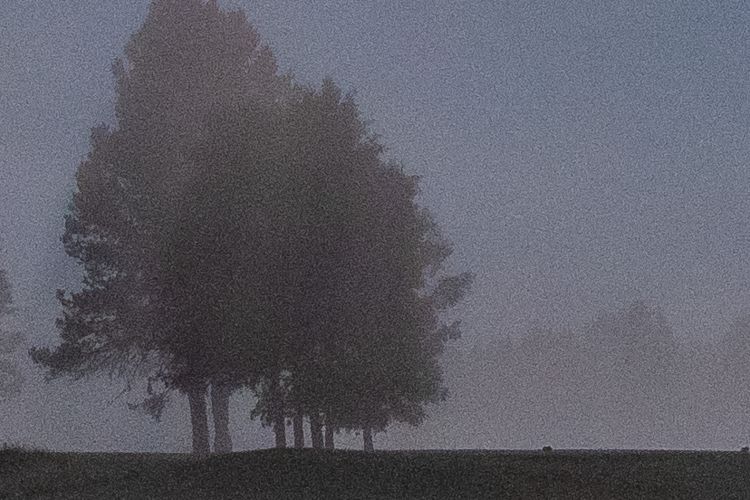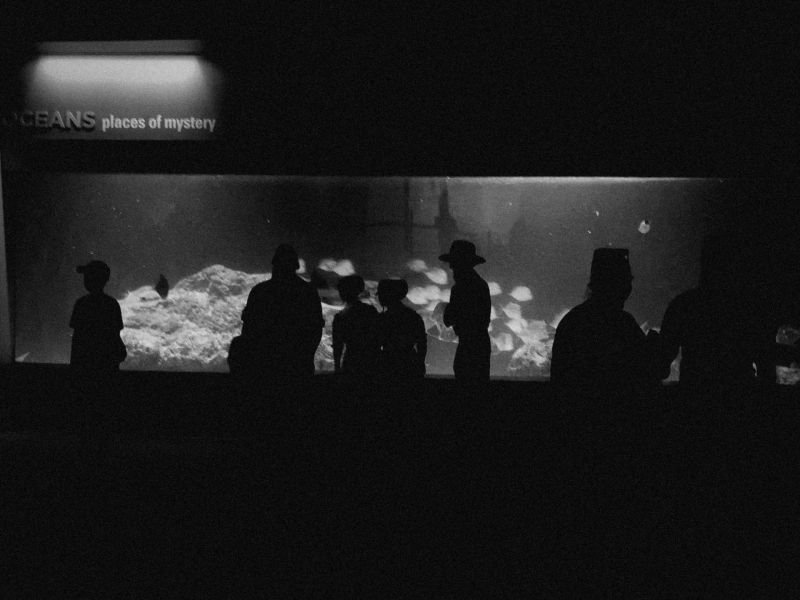As the day draws to a close and the sun sets, your attention is captured by the mesmerizing night sky. Eager to capture this unique scene, you reach for your reliable camera, hoping to preserve the moment. Unfortunately, the resulting image is marred by grainy shadows, falling far short of your expectations. Grainy photos, with their lack of detail, can significantly detract from an otherwise stunning image. It’s a common challenge in photography, particularly when shooting in low-light conditions. However, there are steps you can take to minimize this issue and restore the clarity of your photos. If you’re seeking solutions to fix grainy photos, we’re here to provide guidance and assistance.
What Is Grain or Noise in a Photo?

Grain or noise in a photo refers to the random variation of brightness or color pixels that appear as speckles or a gritty texture. It is commonly seen as unwanted visual artifacts that can degrade the overall quality of an image. Grain is primarily caused by factors such as high ISO settings, low light conditions, long exposure times, and digital image sensors with smaller pixel sizes. Noise can be more noticeable in areas of low contrast or shadow regions of a photo. It is important to note that a certain level of grain or noise can be intentional and used creatively in some photography genres, but in most cases, photographers aim to minimize it for cleaner and sharper images.
Grain Vs. Noise: Which is Which?

Grain and noise are both terms used to describe unwanted visual artifacts in photographs, but they refer to slightly different phenomena.
Grain typically refers to the texture or speckled pattern that was common in film photography. It is a result of the chemical reaction in film emulsion during the development process. Grain gives a distinctive, organic look to the image and is often considered aesthetically pleasing, especially in black and white photography. In film, grain is influenced by the type and sensitivity of the film used.
On the other hand, noise is a digital artifact that occurs in digital photography. It appears as random variations of brightness or color in an image and is caused by factors such as high ISO settings, low light conditions, and limitations in the camera’s image sensor. Noise can appear as speckles or pixelation, particularly in areas of low light or high contrast.
While grain has a more organic and film-like appearance, noise in digital photography is often considered undesirable and can diminish the quality of an image. Photographers strive to minimize noise by using lower ISO settings, optimizing exposure, and using noise reduction techniques during post-processing.
In summary, grain is associated with the texture in film photography, while noise is the digital artifact that occurs in digital images.
Causes of Grainy Photos

There are several factors that can contribute to grainy photos:
- High ISO: When shooting in low light conditions, you may need to increase the camera’s ISO setting to capture enough light. Higher ISO settings introduce more noise into the image, resulting in a grainy appearance.
- Underexposure: If the image is underexposed, meaning it lacks proper exposure to light, the camera may amplify the signal to brighten the image, which can lead to increased noise and grain.
- Small image sensor: Cameras with smaller image sensors, such as those found in smartphones or compact cameras, are more prone to producing grainy images, especially in low light situations. Larger sensors generally handle noise better.
- Long exposures: When using longer exposure times, such as for night photography or capturing moving subjects, the camera’s sensor can heat up, leading to increased noise and grain in the image.
- Image compression: High levels of compression, particularly in JPEG files, can introduce artifacts and increase the visibility of noise and grain.
- Post-processing techniques: Certain post-processing techniques, such as aggressive sharpening or enhancing shadows, can amplify noise and make it more apparent in the final image.
To reduce grain in your photos, you can try the following techniques:
- Use lower ISO settings when possible, and only increase it when necessary.
- Optimize exposure to ensure the image is adequately exposed without underexposure.
- Use cameras with larger image sensors that tend to handle noise better.
- Use noise reduction techniques during post-processing, but be careful not to overdo it, as it can result in loss of detail.
- Shoot in RAW format, as it allows for more control over noise reduction during post-processing.
- Consider using noise reduction software or plugins specifically designed to reduce noise while preserving image quality.
By understanding the causes of grainy photos and employing techniques to minimize noise, you can capture cleaner and more visually appealing images.
There are three main reasons why your photos may appear too grainy:
- Exposure: Improper exposure, either overexposure or underexposure, can contribute to grainy photos. Overexposed images can result in lost details and increased brightness, while underexposed photos can lead to darker areas filled with noise. Maintaining a balanced exposure and preserving the dynamic range can help minimize grain.
- High ISO: ISO is the sensitivity of the camera’s sensor to light. In low-light situations, increasing the ISO setting can help capture brighter images. However, higher ISO values also introduce more noise into the photo, resulting in a grainy appearance. Different cameras have varying levels of acceptable ISO to noise/grain ratio, so using a lower ISO when possible can help reduce grain.
- Camera Performance: Older camera models or cameras with less advanced sensors may exhibit more noticeable grain in low-light conditions. As technology advances, newer cameras tend to perform better in low-light situations, offering improved noise reduction capabilities. Upgrading to a newer camera with better low-light performance can help minimize grain in your photos.
By paying attention to exposure, using appropriate ISO settings, and considering the capabilities of your camera, you can reduce the amount of grain in your photos and capture cleaner and more visually pleasing images.
How to Prevent and Fix Grainy or Noisy Photos
To prevent and fix grainy or noisy photos, here are some effective techniques:
- Use Proper Exposure: Pay attention to the exposure settings when capturing your photos. Avoid extreme underexposure or overexposure, as they can amplify the visibility of noise. Aim for a balanced exposure that retains details in both highlight and shadow areas.
- Optimize ISO Settings: Keep your ISO as low as possible to minimize noise. In well-lit conditions, use the lowest ISO setting your camera offers (usually around 100 or 200). Increase the ISO only when shooting in low-light situations where you need additional sensitivity, but be mindful of the trade-off between brightness and noise.
- Use Adequate Lighting: Provide sufficient lighting in your scene to avoid relying heavily on high ISO settings. Utilize natural light, artificial lighting, or external flashes to illuminate your subject and reduce the need for excessive ISO adjustments.
- Use a Tripod or Image Stabilization: Camera shake can introduce noise into your photos, especially when shooting with slower shutter speeds or in low-light conditions. To minimize this, use a tripod or any form of image stabilization to keep your camera steady during the exposure.
- Shoot in Raw Format: Raw files contain more data and provide greater flexibility during post-processing. When editing a raw image, you can apply noise reduction techniques without sacrificing too much image quality.
- Noise Reduction Software: Take advantage of noise reduction tools available in post-processing software. These tools can effectively reduce grain while preserving important details. Experiment with different settings to find the right balance between noise reduction and retaining image sharpness.
- Upgrade Your Camera: If you frequently encounter high levels of noise in your photos, consider upgrading to a camera model with better low-light performance. Newer cameras often have improved sensor technology and advanced noise reduction capabilities, resulting in cleaner images at higher ISO settings.
By implementing these techniques, you can prevent and minimize grain or noise in your photos, resulting in clearer and more visually appealing images.








